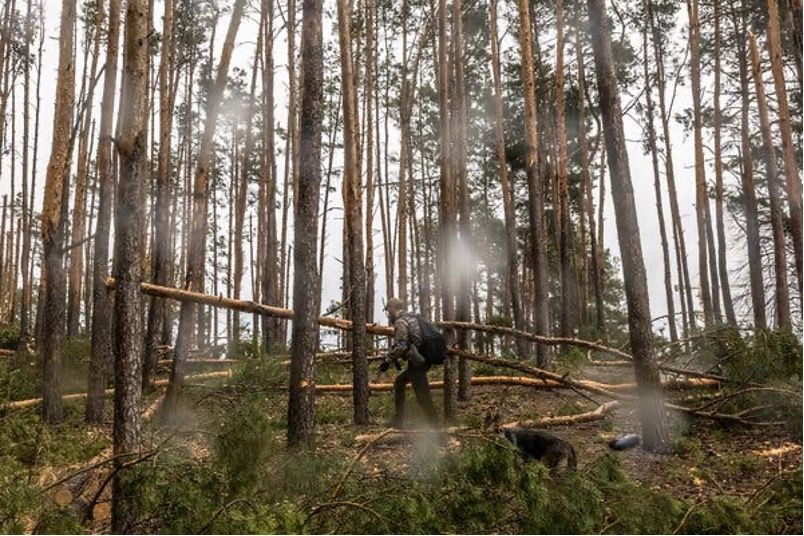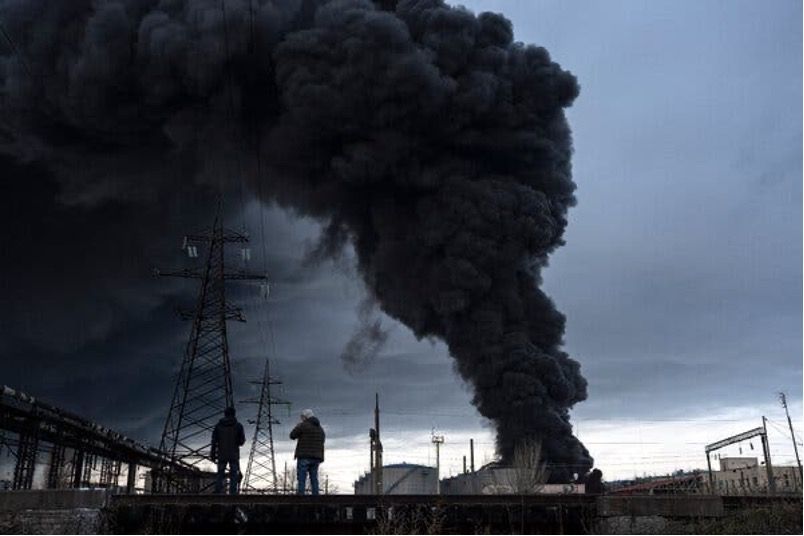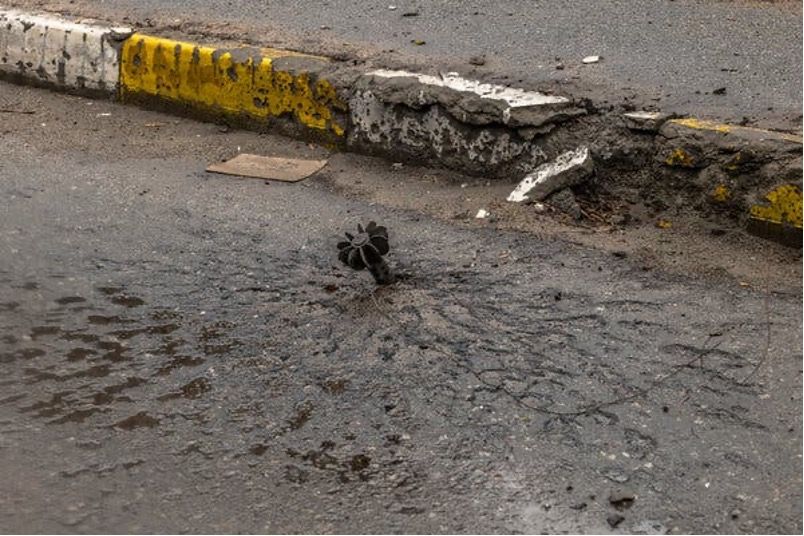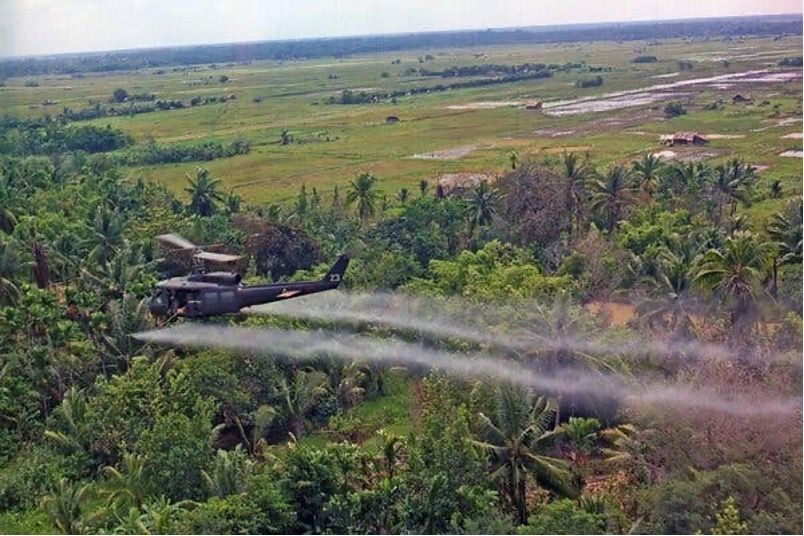
反對富豪瓜分世界.全球資源人民共享。People Before Profit!
'Silent Victims': How Nature Became a Victim of War (Part 1)
Studies of past conflicts suggest that the war in Ukraine could have far-reaching effects on the environment.

Author: Emily Anthes
Source: New York Times
Original publication date: April 13, 2022 Translation: Global Monitoring
The Black Sea Biosphere Reserve on Ukraine's southern coast is a haven for migratory birds. In winter, more than 120,000 birds soar over the shores here, and colorful and rare species — such as white-tailed eagles, red-breasted mergansers and black-winged sandpipers — nest in the reserve’s waters and wetlands.
The reserve is also home to the endangered sand blind mole, Black Sea bottlenose dolphin, rare flowers, countless mollusks, and dozens of species of fish. But in recent weeks, an invading army has come here.
"Today, the territory of the reserve was occupied by Russian troops, and there are no reports of environmental damage," Oleksandr Krasnolutskyi, Ukraine's deputy minister of environmental protection and natural resources, said in an email in March. information.”
But military activity in the area has sparked fires big enough to be seen from space, raising fears of destruction of critical bird breeding habitats.
Thor Hanson is an independent conservationist and an expert on how warfare affects the environment. "We saw what happened in Ukraine. First of all we were shocked and horrified by the human cost, but also shocked and horrified by what was happening in the environment there," he said.
Since Russian troops invaded Ukraine in February, the world's attention has been on the latter's heavily shelled city. However, Ukraine, which is in an ecological transition zone, also has vibrant wetlands and forests, as well as large tracts of virgin grasslands. Mr Krasnolutsky said Russian troops had entered more than a third of Ukraine's nature reserves or conducted military operations in those areas. "These ecosystems and species have become vulnerable."
Local reports and studies of past armed conflicts suggest that the ecological impact of conflict can be profound. War destroys habitats, kills wildlife, creates pollution, completely reshapes ecosystems, and the consequences will ripple through the decades to come.
"The environment is the silent victim of conflict," said Doug Weir, director of research and policy at the Conflict and Environment Observatory, a UK-based nonprofit.
But there are exceptions. War can make landscapes too dangerous or inhospitable for humans, or create too many barriers to natural resource development, giving ecosystems a rare opportunity to recover. It's a paradox that highlights the threat to the natural world by human activity in times of war and peace.
"Humans are often destructive, and that includes their conflicts," said Princeton University biologist Robert Pringle.


scarred nature
Waging war is an act of sabotage. And research shows that war has a disproportionate impact on the most important ecosystems on Earth. A 2009 study by Dr. Hansen and his colleagues found that from 1950 to 2000, more than 80% of the world's major armed conflicts occurred in biodiversity hotspots - areas with abundant but threatened indigenous species.
Dr Hansen concluded: "If we care about biodiversity and conservation in the world, we also need to worry about armed conflict and conflict patterns."
There are few large-scale studies on the ecological impact of war, but in a 2018 study scientists found that armed conflict is associated with a decline in wildlife in protected areas across Africa. The researchers found that wildlife populations stabilized during peacetime and declined during war; the more frequent the conflict, the greater the decline.
In some cases, environmental damage is an explicit military strategy. During the Vietnam War, the U.S. military sprayed large swathes of the jungle with defoliant to thin the forest in order to keep enemy troops out of cover. Dr Hansen said the armed forces often used "lootable resources" - such as oil and timber - to finance their war effort.
But war can wreak deep damage, even if it’s not deliberately harming the environment: Soldiers dig trenches, tanks flatten vegetation, bombs scar the ground, explosives set fires, weapons spew toxic gases and particles into the air, and heavy metals seep into the soil and water.
"In many conflict areas, these things are not cleaned up. So when we see damage, it's long-term," said Mr. Will. In 2011, scientists reported that around Ypres, one of Belgium's main battlegrounds in World War I In some parts of the world, soil levels of lead and copper are still high.
Environmental pollution is a particularly serious problem in Ukraine. "This is a high-level heat war in a country with a lot of industrial risk," Mr Weir said.


Ukraine is littered with chemical plants, storage facilities, oil depots, coal mines, gas pipelines and other industrial sites that could unleash massive amounts of pollution if damaged. Some of them have already been hit.
"It's really comparable to the use of chemical weapons," said Oleksii Vasyliuk, a biologist in Vasilkiev, Ukraine and co-founder of the Ukrainian Nature Conservation Group . "The Russians did not bring poisons here, but released poisons that were already in Ukraine into the environment."
Then there's nuclear fear. Ukraine's four nuclear power plants have 15 nuclear reactors; the largest of them is already the site of intense fighting. "Military operations near nuclear power plants could lead to large-scale radioactive contamination - not only affecting Ukraine, but possibly spreading beyond its borders," Mr Krasnolutsky said. Damage to nuclear waste storage sites could also produce severe contamination .
Scientists have learned a lot about the long-term effects of radiation on animals and ecosystems from research in the Chernobyl Exclusion Zone — an area that has been largely abandoned since the 1986 disaster.
Studies of the site have shown that radiation not only causes deformities in individual animals, but affects entire populations. "We saw a dramatic decline in biological abundance and a reduction in diversity in the more radioactive regions," said Timothy Mousseau, a biologist at the University of South Carolina.
Experts say Russian military activity in the Chernobyl exclusion zone could worsen the situation there. Fires can release radioactive particles captured by local plants, while driving through the most polluted areas can set off a cloud of radioactive fallout.
(to be continued)
--
📣📣We have a reader group now!
Dear readers, we have recently opened a reader WeChat group on the WeChat public account. You are welcome to join!
We will share all kinds of information, articles, opinions, etc. about labor and environmental protection in the group.
Group friends are welcome to join the group to share, discuss, communicate, and make friends!
I hope that everyone will be friendly to each other after joining the group, and jointly create a small cyberspace that is progressive, rational and constructive.
(How to join the group: After scanning the QR code below to add friends, we will add you to the reader group🙌)

Like my work?
Don't forget to support or like, so I know you are with me..
Comment…